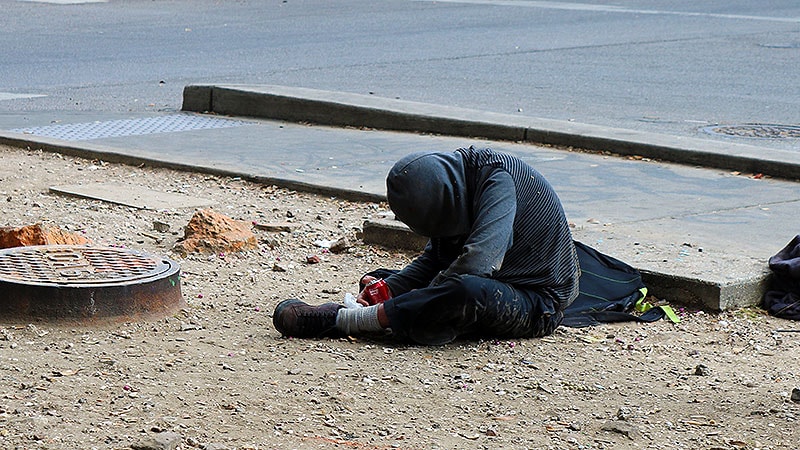[ad_1]
The Ontario government’s decision to close multiple safe consumption sites (SCSes) for people who use drugs (PWUD) and open 27 Homelessness and Addiction Recovery Treatment (HART) Hubs instead is drawing widespread criticism from clinicians who treat substance use disorders (SUDs).
The announcement is part of the government’s response to the province’s opioid crisis, which has seen the annual number of substance-related deaths jump by 68% (from 1660 to 2796) between 2018 and 2022, according to Public Health Ontario.
The HART Hubs, which will be spread across the province and are scheduled to open by April 1, will provide mental health support, addiction care, primary care, supportive housing, and employment services, according to a government press release.
However, they will not include SCSes, an omission that experts say is dangerous. An independent auditor’s report concluded that the decision was made without proper planning, impact analysis, or public consultation.
The closure of nine Ontario SCSes within 200 metres of schools or daycares was announced in August 2024. A pedestrian had been killed by a stray bullet near one of the sites a year earlier. “Crime in the vicinity of these sites is significantly higher, compared to surrounding neighborhoods,” said a government press release. “In Toronto, reports of assault in 2023 are 113% higher, and robbery is 97% higher in neighborhoods near these sites compared to the rest of the city.”
Experts who treat SUDs say that citing crime as the reason for the SCS closures is a flawed approach.
“Extensive research indicates that the establishment of SCSes does not lead to an increase in crime,” Farihah Ali, PhD, scientific lead and node manager for the Ontario Canadian Research Initiative in Substance Matters in Toronto, told Medscape Medical News. In fact, a study investigating the association between SCSes and homicide rates in Toronto between 2010 and 2023 found a reduction in the monthly rate of homicides in areas where SCSes had opened.
Additionally, public disorder has been shown to decrease after the opening of SCSes, said M-J Milloy, PhD, associate professor of social medicine and interim director of research at the University of British Columbia’s Centre on Substance Use in Vancouver, British Columbia, Canada. He cited an evaluation of a pilot SCS in Vancouver that reported “a decline in the predicted mean number of public injections and publicly discarded syringes that coincided with the opening of the facility.” Local businesses declared the SCS “more beneficial than detrimental.”
Relocating drug treatment facilities based on residents’ and business owners’ complaints also defeats the purpose of these facilities, added Milloy, who coauthored a study showing reduced rates of overdose deaths near SCSes. “Location is an important determinant of who will use the facility and what impact it will have on health, both of individuals and the wider community,” he told Medscape Medical News. “To work, they must be close to the people they are meant to serve.”
“We know that people who inject drugs generally will not travel very far to use these services, so it is important that they be located in areas with high rates of substance use,” added Geoff Bardwell, PhD, assistant professor of public health and director of the Drug Lab at the University of Waterloo, Waterloo, Ontario, Canada.
Experts say that services offered at the proposed hubs will be less effective if they do not include SCSes. “I anticipate that we will witness more death and poor health outcomes as a result of this policy change,” Bardwell told Medscape Medical News.
“Treatment centers alone cannot address immediate overdose prevention, while SCSes provide life-saving interventions by responding to overdoses on site,” added Ali. “Without the inclusion of SCS, treatment centers may struggle to connect with the highest-risk populations, ultimately reducing their effectiveness.”
Milloy added that the policy also overlooks the fact that not all PWUD have an SUD. They therefore would not qualify for treatment at a hub and would lose access to an SCS. “Not only will they be forced to go back to injecting in parks, parking lots, library bathrooms, et cetera, but also they will lose access to an intervention proven to save their lives if they overdose,” he said. “This is the central flaw in the justification of eliminating evidence-based, life-saving harm-reduction services in the midst of an unprecedented drug poisoning crisis by making vague and untested promises of increased access to treatment for substance use disorders.”
Ali reported having no relevant financial relationships. Milloy disclosed support from the United States National Institutes of Health and funding from the Canadian Institutes of Health Research (CIHR), Michael Smith BC, the Public Health Agency of Canada, and the United States National Institute on Drug Abuse. He holds the Canopy Growth professorship in cannabis science, a University of British Columbia faculty position established through arm’s-length gifts to the university from Canopy Growth, a licensed producer of cannabis, and the government of British Columbia’s Ministry of Mental Health and Addictions. He is the co-principal investigator of an investigator-initiated and CIHR-funded pilot clinical trial involving a study drug purchased from Aurora, a licensed producer of cannabis. He has no personal financial relationships with the cannabis industry. Bardwell disclosed research support from CIHR and the Vancouver Foundation.
Kate Johnson is a Montreal-based freelance medical journalist who has been writing for more than 30 years about all areas of medicine.
[ad_2]
Source link : https://www.medscape.com/viewarticle/ontarios-closure-safe-consumption-sites-draws-criticism-2025a10003m2?src=rss
Author :
Publish date : 2025-02-12 08:13:51
Copyright for syndicated content belongs to the linked Source.
